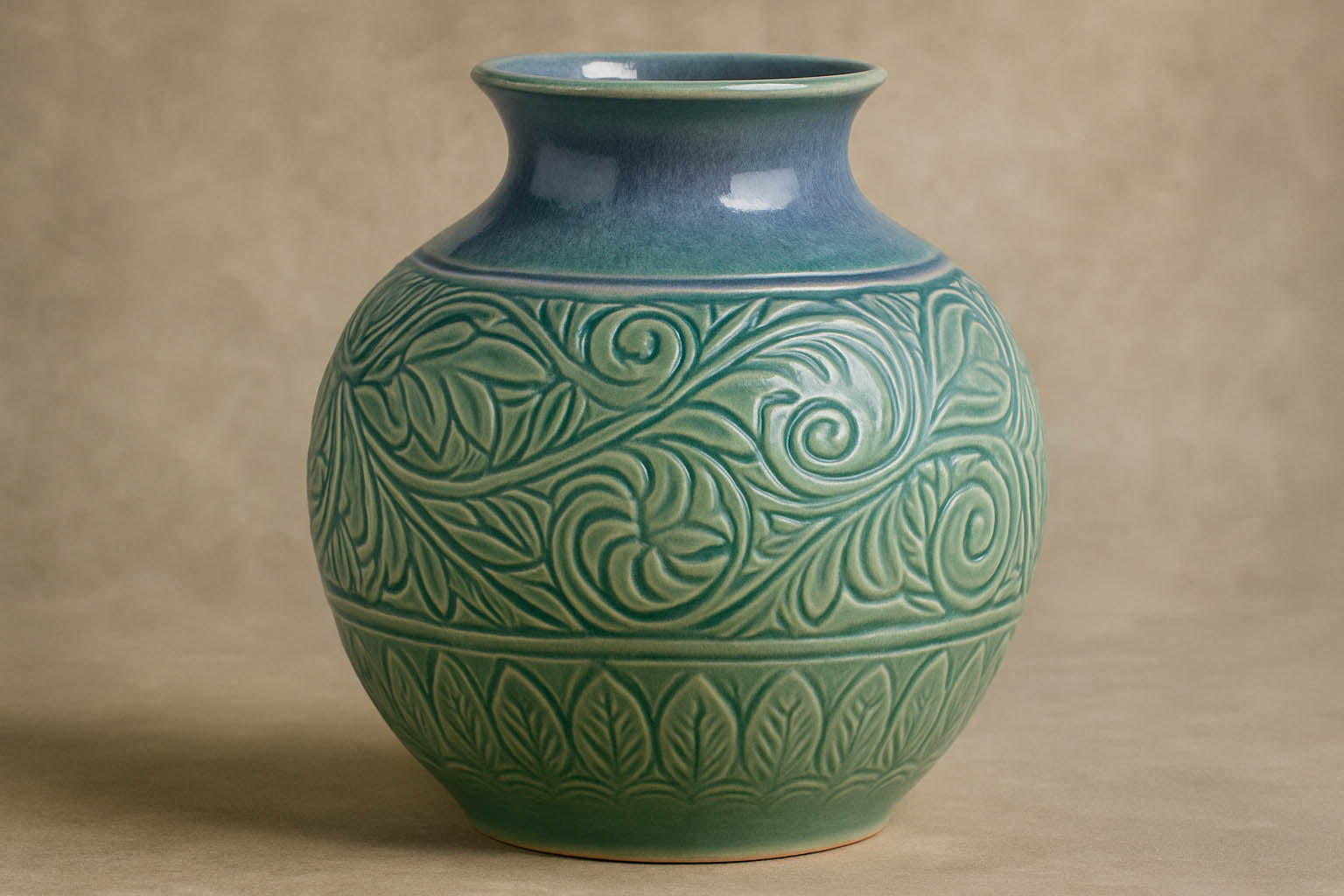
Celadon Glazes: Best Practices, Common Pitfalls, and Expert Tips
Celadon glazes have been widely misused by members who are hoping for very different results than what they are getting. Let's talk about celadon glazes and when you should (and shouldn't) use them...
Celadon glazes can create extraordinary results in pottery, but only when used intentionally and for their intended use. Their soft transparency pools into textures, revealing the clay body underneath. Without the right surface preparation, celadons can betray even beautiful work with visible brush strokes and uneven coverage. Here's how to use celadon wisely, what to avoid, and how to bring out the best in your pottery.
What Is a Celadon Glaze?
Celadon is a translucent glaze traditionally seen in soft greens and blues, originating from ancient Chinese pottery. It works by settling into the low areas of a textured surface, creating beautiful tonal variations. Instead of hiding the clay beneath, celadon reveals craftsmanship—from carvings and throwing lines to stamping and surface texture. Today, potters use celadon to bring out intricate surface details that would otherwise be lost under opaque glazes, and it comes in a beautiful and wide variety of colors.
When Celadon Glazes Work Best
Celadon glazes are an ideal choice when your pottery features:
- ✅ Deep carving or stamping
- ✅ Strong throwing lines from the wheel
- ✅ Layered textures and recessed patterns
- ✅ Piercings and cut-out designs
In these situations, celadon flows naturally, deepening colors in the low spots and creating stunning highlight effects on the raised areas.
When to Avoid Celadon Glazes
Celadon should be avoided when working with:
- 🚫 Smooth, flat surfaces lacking detail
- 🚫 Large, broad areas requiring uniform color
- 🚫 Pieces where visible brush marks would ruin the final look
On smooth pottery, celadon often dries unevenly, resulting in streaky finishes and unpredictable thin spots that distract from your design.
Which Glaze Families to Use Instead
If you're looking for glazes that are superb for broad, smooth surfaces, consider using options from the Coyote Gloss family, Coyote Satin family, or the Amaco Satin Matte family. These glaze families are vibrant, stable, and forgiving. They are designed to flow evenly across wide, flat areas without leaving obvious brush strokes, patchiness, or blotchiness. For achieving clean, professional, and colorful finishes over smooth pottery, these families are far better choices than celadons.
Final Thoughts on Celadon Glazes
Choosing celadon is a choice to celebrate craftsmanship. It rewards texture, storytelling, and surfaces that invite closer inspection. The next time you're glazing a piece, think about whether celadon will reveal your best work—or if another glaze might better serve your creative vision.
What Our Potters Say
“Switching to celadon on textured mugs made my work look professional overnight. I’ll never go back!” - Jenna M.
“I learned the hard way not to glaze flat surfaces with celadon. Now my carved bowls get all the attention!” - Luis C.
Frequently Asked Questions
Can I use celadon glazes on hand-built pottery?
Yes—if your hand-built piece has strong surface texture. Smooth slabs won't showcase celadon well without added design work. Visit our FAQs page to learn more.
Do celadon glazes behave differently depending on thickness?
Absolutely. Thin coats can turn nearly transparent, while heavy layering in carved areas deepens color significantly. Learn about glaze control in our pottery classes.

Join Our Creative Community
Follow Dan Pearce, owner of The Clay Hole, and join nearly 3 million pottery lovers on Facebook, Instagram, and TikTok. Watch real student success stories, pottery tutorials, and experience how inclusive and creative our studio truly is.